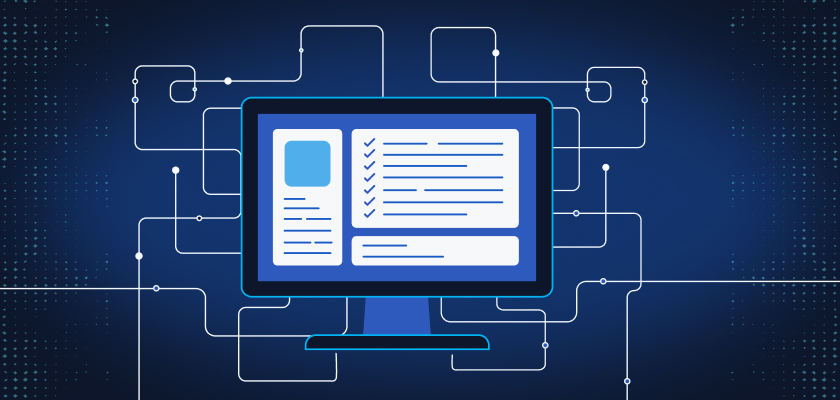
SOC 2 Compliance Requirements
SOC 2 isn’t about checking boxes, it’s about demonstrating, via an independent attestation, that you protect client data consistently and effectively. This guide explains what auditors look for under the AICPA Trust Services Criteria (TSC) and how to build an audit-ready program, starting with a clear system boundary and well-owned controls.
This guide outlines exactly what auditors expect and how to build a compliant, audit-ready environment using the Trust Services Criteria and supporting controls.
SOC 2 Requirements Checklist
Download the SOC 2 requirements checklist
What Does SOC 2 Require From Organizations?
SOC 2 is built around five Trust Services Criteria (TSC), principles that define the scope of your compliance report. You choose which of these apply based on your services and client expectations.
- Security (Required): Protection against unauthorized access to systems or data
- Availability: Ensuring systems remain accessible and operational as promised
- Processing Integrity: System processing is accurate, complete, and timely
- Confidentiality: Restricted data is protected throughout its lifecycle
- Privacy: Personal data is collected, used, and retained appropriately
Most organizations include Security by default, and expand based on contractual needs or risk profile.
Understanding the Points of Focus
Each Trust Services Criteria includes “Points of Focus,” interpretive guidelines that help organizations and auditors understand what strong control implementation looks like.
- They are not mandatory, but they’re widely used to evaluate whether a system of controls is complete and effective.
- Examples include:
- “The entity identifies and manages vulnerabilities” (Security)
- “The entity monitors system availability and performance” (Availability)
Think of Points of Focus as a roadmap for aligning your technical and administrative safeguards with SOC 2 expectations.
Key Control Areas Evaluated in a SOC 2 Audit
SOC 2 doesn’t dictate specific controls, but auditors commonly evaluate:
- Access Management & PAM: SSO/MFA, least privilege, quarterly access reviews, JML (joiner/mover/leaver)
- Change & Release Management (including IaC/CI-CD): approvals, Segregation of Duties, emergency change logs
- Secure SDLC: code review, SAST/DAST/secret scanning, dependency mgmt (SBOM optional)
- Vulnerability & Patch Management: risk-based SLAs, monthly scans, remediation tracking
- System Ops & Monitoring: centralized logging, alert triage, EDR, log retention
- Backup, DR & BCP: tested restores, annual DR/BCP exercises, RTO/RPO defined
- Risk & Third-Party Management: risk register, treatment plans, vendor due diligence, CUECs documented
- Data Security & Crypto: classification, encryption in transit/at rest, key mgmt & rotation, DLP
Map whatever framework you use (e.g., NIST, ISO 27001) back to the TSC/CC criteria.
You can use frameworks like NIST or ISO 27001 to inform your control structure, but they must map to the SOC 2 criteria.
Policies and Procedures You’ll Need
Strong, well-maintained documentation is critical to SOC 2 compliance. Auditors will ask to review internal policies that govern how your team secures systems and data.
Core documentation includes:
- Information Security Policy
- Access Control Policy
- Change Management Policy
- Incident Response Plan
- Vendor Risk Management Policy
- Data Retention and Privacy Policy
Each policy should align with your selected Trust Services Criteria and demonstrate consistent enforcement.
SOC 2 Audit Readiness Requirements
Getting ready for a SOC 2 audit involves three phases:
- Gap Assessment: Review current processes against SOC 2 criteria to identify deficiencies.
- Control Implementation: Build or improve controls, train staff, and document key processes.
- Evidence Collection: Prepare evidence to prove that controls are designed and operating as intended.
Evidence examples include:- User access listings & quarterly reviews
- New-hire/termination tickets
- Change tickets with approvals
- Pipeline logs
- Monthly vuln scans & remediation proofs
- EDR dashboards, backup success reports & restore tests
- DR/BCP tabletop records
- Incident logs & postmortems
- Key rotation records
- Vendor reviews.
Ensure timestamps, population lists, and samples are available.
Type I vs. Type II:
- Type I: Confirms controls are in place at a point in time
- Type II: Confirms controls operate effectively over a period (typically 3–12 months)
Who’s Involved:
- Executive sponsor (CISO or CTO)
- Department heads (IT, Ops, DevSec)
- vCISO or compliance lead
- External auditor (CPA firm)
Maintaining SOC 2 Compliance Over Time
SOC 2 Type II isn’t just about what happened once, it’s about whether controls continue to operate effectively.
To maintain compliance:
- Perform regular internal reviews of controls and policies
- Monitor logs and alerts for system activity
- Keep documentation up to date
- Automate evidence collection and task tracking to reduce manual work
Tip: A vCISO platform like Cynomi can support continuous compliance by automating assessments, tracking remediation, and maintaining audit-ready documentation year-round. Between reports, provide a bridge letter to cover the period from your report end-date to present, confirming no material changes.
SOC 2 Requirements FAQs
They are the core principles (Security, Availability, Processing Integrity, Confidentiality, Privacy) used to assess your controls.
Only Security is required. However, auditors expect controls that align with all selected Trust Criteria.
Yes, but most organizations include Availability and Confidentiality based on client expectations.
Generally, 3–12 months. A 6-month period is common for initial Type II reports.
Policies, evidence of control implementation, logs, reports, training records, incident response documentation.
Technically, yes, but automation significantly reduces time, cost, and manual effort, especially for multi-client MSPs and MSSPs.
No. SOC 2 can support but doesn’t replace specific regulatory frameworks.